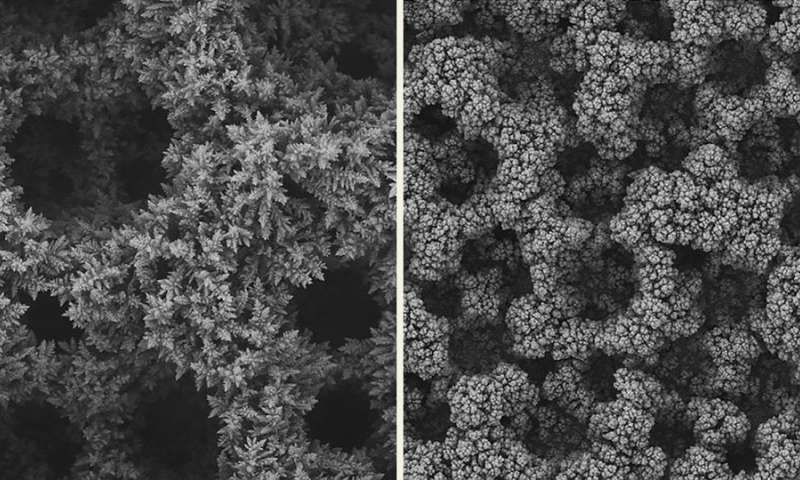Fossil fuels have long been the precursor to plastic, but new research from the University of Nebraska-Lincoln and European collaborators could help send that era up in smoke—carbon dioxide, to be exact.
Produced almost entirely from burning fossil fuels, carbon dioxide concentrations in the atmosphere have risen from 280 parts per million in the pre-industrial era to about 410 PPM today. That trend, combined with the finite supply of fossil fuels, has pushed researchers to explore methods for producing plastic from CO2 rather than petroleum or natural gas—recycling CO2 just as plastic is now.
Nebraska’s Vitaly Alexandrov and colleagues have now detailed a catalyst-based technique that can double the amount of carbon dioxide converted to ethylene, an essential component of the world’s most common plastic, polyethylene.
“The conversion of CO2 is very important to help offset the emissions that lead to global warming and other detrimental processes in the environment,” said Alexandrov, assistant professor of chemical and biomolecular engineering.
Copper has emerged as the prime candidate for catalyzing chemical reactions that convert carbon dioxide to plastic-forming polymer molecules, which it does when voltage is applied to it. But some copper-based setups have failed to convert more than about 15 percent of CO2 into ethylene, a yield too small to meet the needs of industry.
Find your dream job in the space industry. Check our Space Job Board »
So researchers at Swansea University in Wales decided to try coating copper with different polymers in the hope of increasing that efficiency. After overlaying it with a polymer called polyacrylamide, they found that their copper foam’s conversion rate rose from 13 to 26 percent.
Alexandrov and postdoctoral researcher Konstantin Klyukin then ran quantum mechanics-based simulations through Nebraska’s Holland Computing Center to help explain why polyacrylamide managed to outperform its polymeric cousins. They discovered that the polyacrylamide breaks up CO2 and reassembles it into a pair of bonded C-O compounds, then stabilizes that new molecule as it drives further chemical reactions—those ultimately producing ethylene.
“CO2 is a very stubborn molecule because it has double bonds that are very difficult to break,” Alexandrov said. “That’s the most challenging part of trying to convert it to something else. You don’t want to spend too much energy converting it; otherwise, it’s a trade-off that becomes inefficient.”
Even as researchers look to further improve that efficiency, Alexandrov said, they have an eye toward a larger goal: turning CO2 directly into the polyethylene that makes up plastic bags, containers and films.
“One of the things that experimentalists want is to go from synthesizing simple molecules, like ethylene, to very complicated molecules in one batch reaction,” Alexandrov said. “You put in CO2 catalysts, and you end up with polymer structures that you can sell in a store. But those molecules have very complicated structures. This is a first step toward understanding how we can (create them).”
Provided by:
University of Nebraska-Lincoln
More information:
Sunyhik Ahn et al. Poly-Amide Modified Copper Foam Electrodes for Enhanced Electrochemical Reduction of Carbon Dioxide, ACS Catalysis (2018). DOI: 10.1021/acscatal.7b04347
Image:
Microscopic views of copper foam when untreated (left) vs. coated with a polymer called polyacrylamide, which new research has shown can double the conversion of C02 to ethylene
Credit: American Chemical Society / ACS Catalysis
